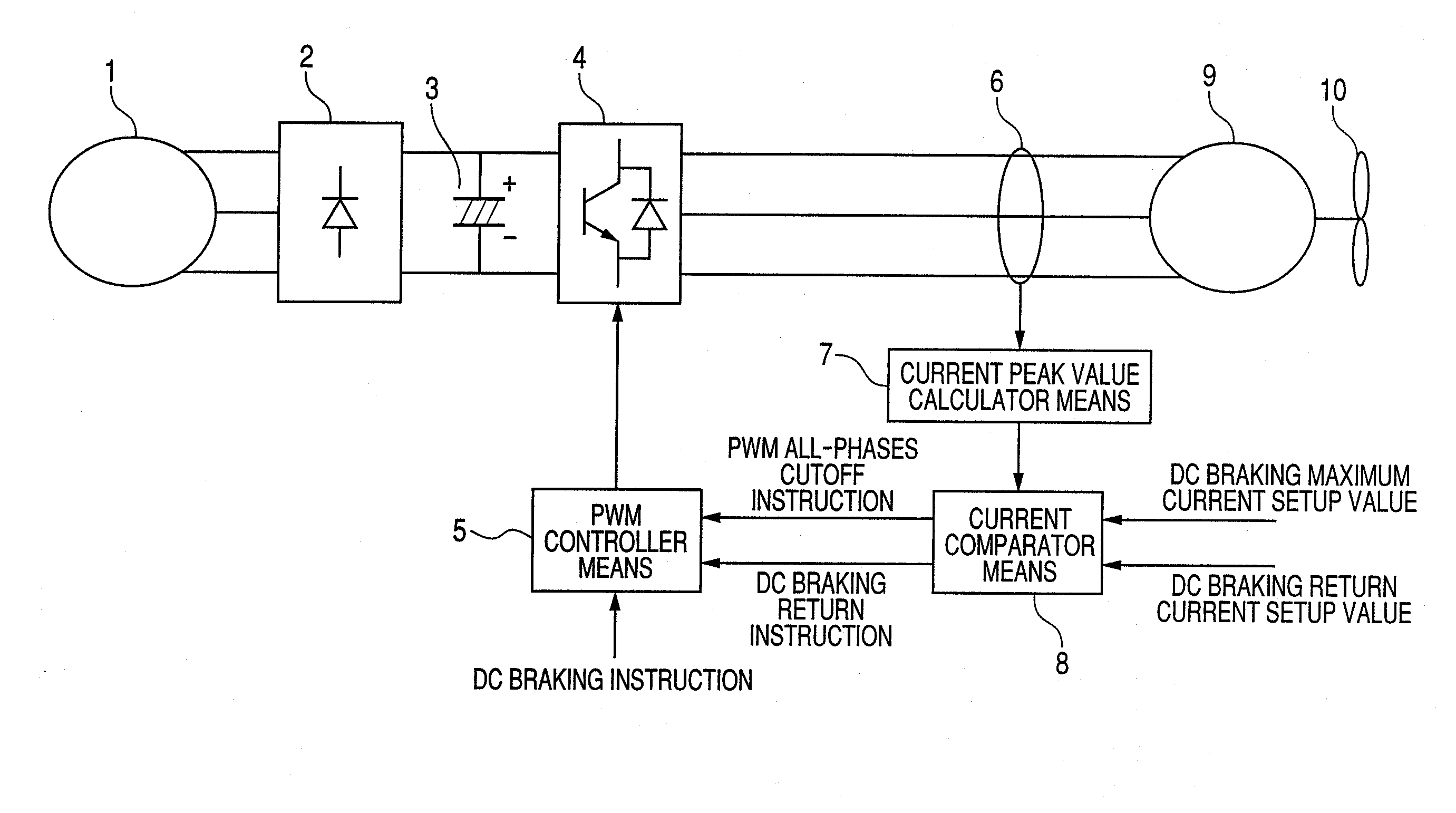Power converter device
a power converter and converter technology, applied in the direction of dynamo-electric converter control, motor/generator/converter stopper, dynamo-electric gear control, etc., can solve the problems of inability to obtain the desired braking power, long time, and a large amount of braking power, and achieve stable braking power. , the effect of large braking power
- Summary
- Abstract
- Description
- Claims
- Application Information
AI Technical Summary
Benefits of technology
Problems solved by technology
Method used
Image
Examples
embodiment 1
[0023]FIG. 1 is a block circuit diagram for showing an embodiment according to the present invention. AC voltage generating from a AC power source 1 is rectified within a rectifier circuit 2, and it is smoothed by a smoothing circuit 3. DC current smoothed is converted to AC voltage through a switching circuit 4, thereby to be applied to a permanent magnet synchronous motor 9.
[0024]A PWM controller means 5 controls ON and OFF of the switching circuit 4, so that random voltage can be applied to the permanent magnet synchronous motor 9.
[0025]A current detector means 6 detects phase current running through the permanent magnet synchronous motor 9. Or, a shunt resistor may be provided on a negative electrode side of the smoothing circuit 3, so as to estimate the phase current from the current flowing through this shunt resistor. A fan 10 is attached onto a shaft of the permanent magnet synchronous motor 9.
[0026]FIG. 2 shows an example of waveforms of rotation number and current when the...
PUM
 Login to View More
Login to View More Abstract
Description
Claims
Application Information
 Login to View More
Login to View More - R&D
- Intellectual Property
- Life Sciences
- Materials
- Tech Scout
- Unparalleled Data Quality
- Higher Quality Content
- 60% Fewer Hallucinations
Browse by: Latest US Patents, China's latest patents, Technical Efficacy Thesaurus, Application Domain, Technology Topic, Popular Technical Reports.
© 2025 PatSnap. All rights reserved.Legal|Privacy policy|Modern Slavery Act Transparency Statement|Sitemap|About US| Contact US: help@patsnap.com



